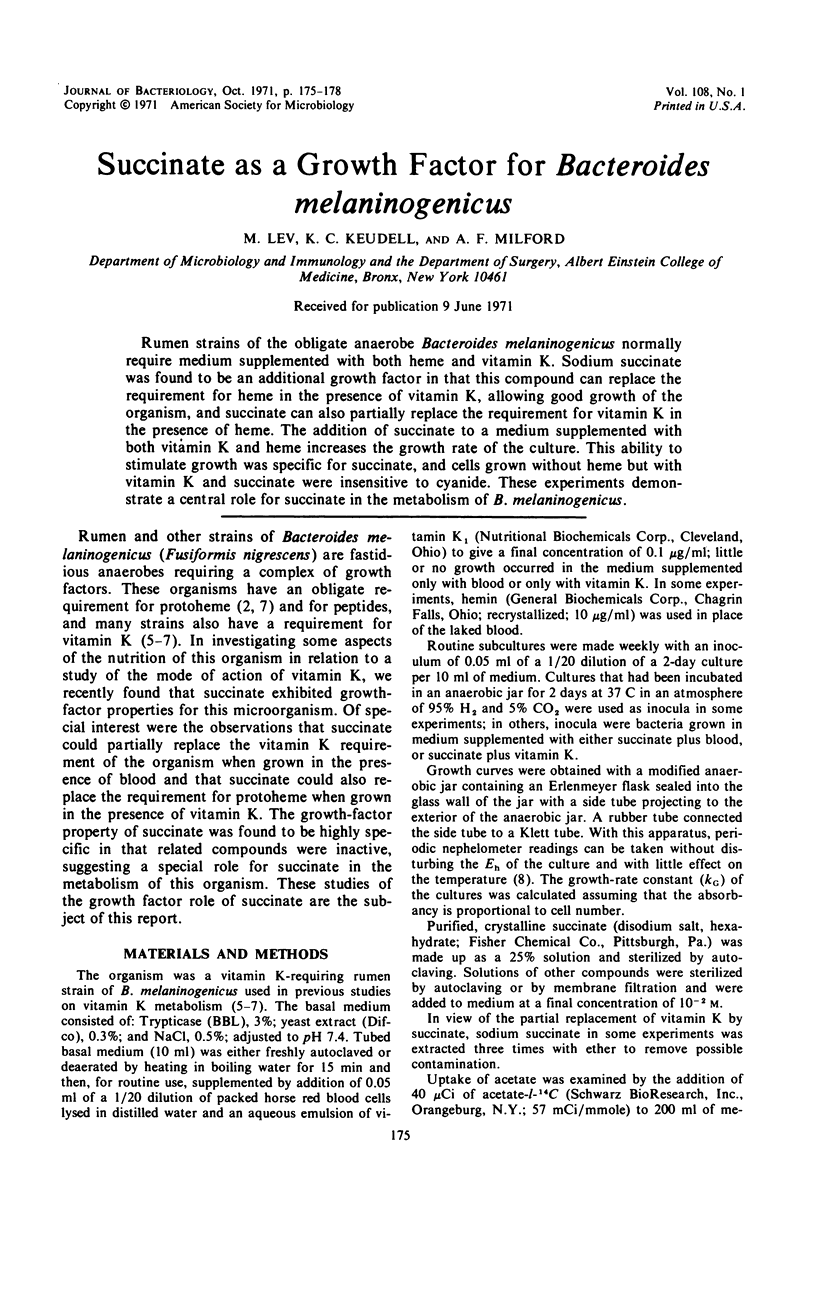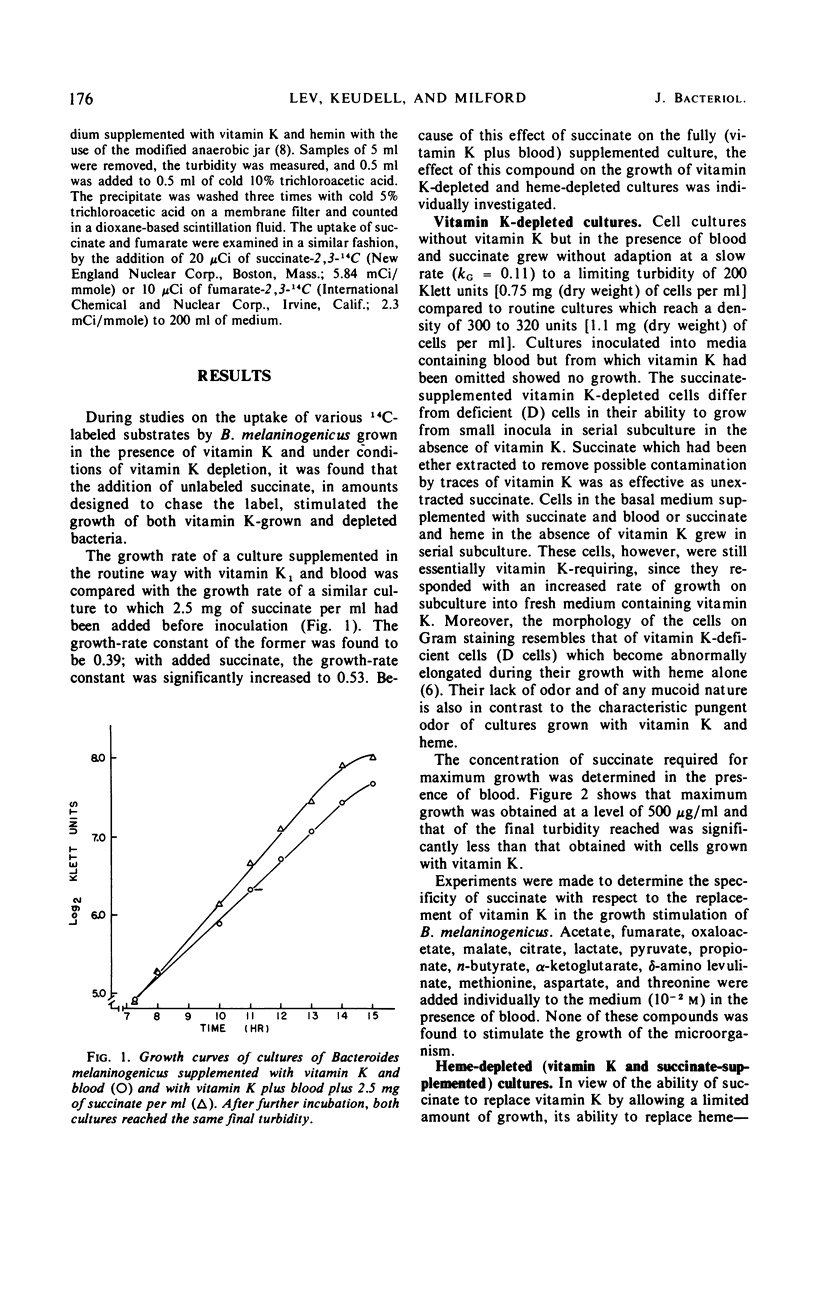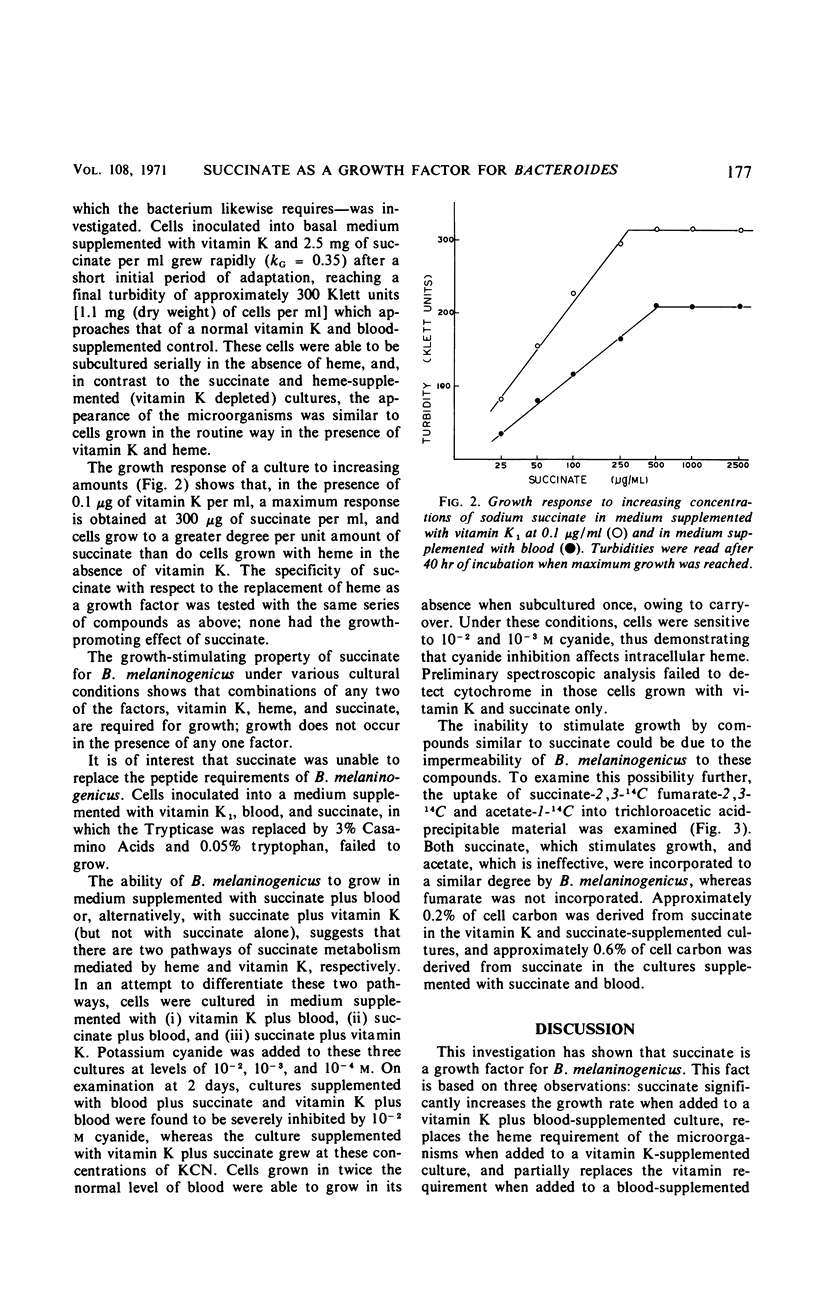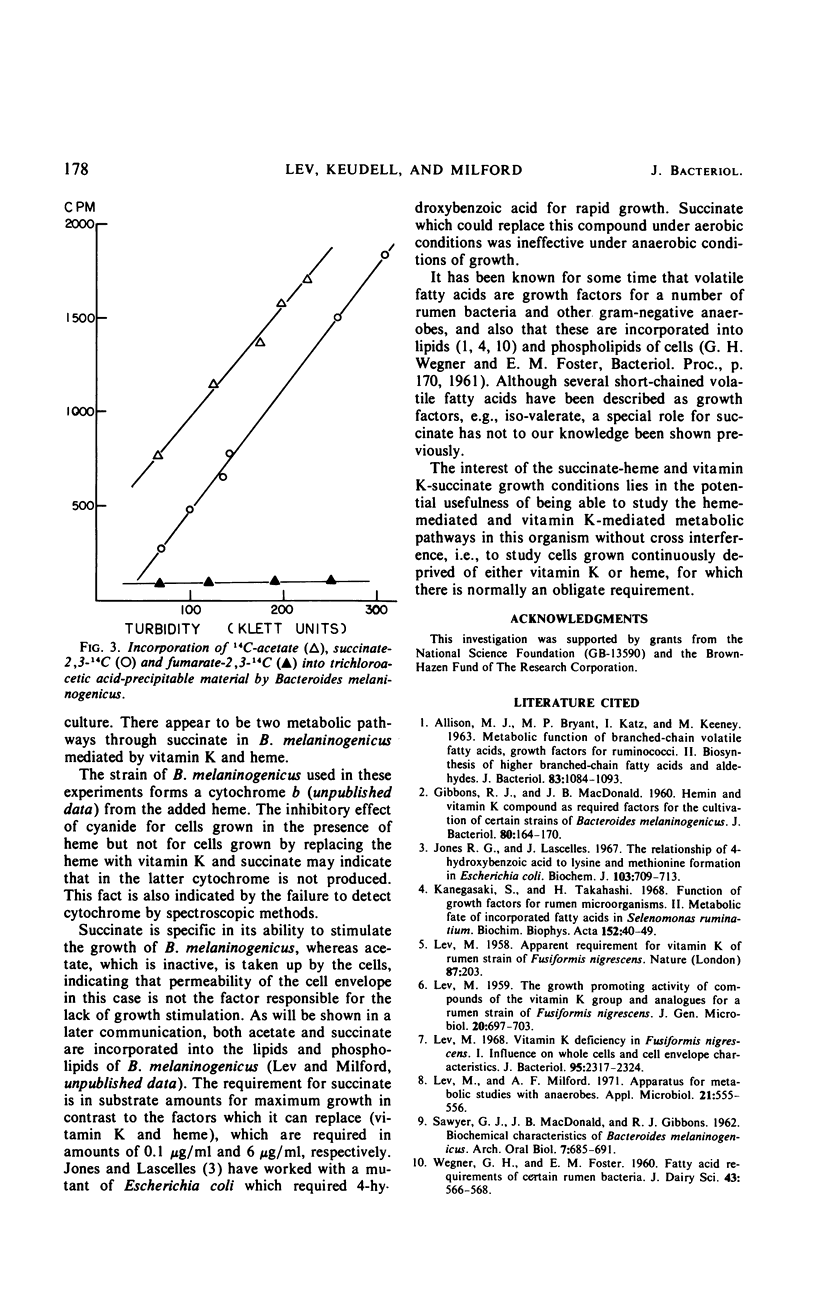Abstract
Rumen strains of the obligate anaerobe Bacteroides melaninogenicus normally require medium supplemented with both heme and vitamin K. Sodium succinate was found to be an additional growth factor in that this compound can replace the requirement for heme in the presence of vitamin K, allowing good growth of the organism, and succinate can also partially replace the requirement for vitamin K in the presence of heme. The addition of succinate to a medium supplemented with both vitamin K and heme increases the growth rate of the culture. This ability to stimulate growth was specific for succinate, and cells grown without heme but with vitamin K and succinate were insensitive to cyanide. These experiments demonstrate a central role for succinate in the metabolism of B. melaninogenicus.
Full text
PDF



Selected References
These references are in PubMed. This may not be the complete list of references from this article.
- ALLISON M. J., BRYANT M. P., KATZ I., KEENEY M. Metabolic function of branched-chain volatile fatty acids, growth factors for ruminococci. II. Biosynthesis of higher branched-chain fatty acids and aldehydes. J Bacteriol. 1962 May;83:1084–1093. doi: 10.1128/jb.83.5.1084-1093.1962. [DOI] [PMC free article] [PubMed] [Google Scholar]
- GIBBONS R. J., MACDONALD J. B. Hemin and vitamin K compounds as required factors for the cultivation of certain strains of Bacteroides melaninogenicus. J Bacteriol. 1960 Aug;80:164–170. doi: 10.1128/jb.80.2.164-170.1960. [DOI] [PMC free article] [PubMed] [Google Scholar]
- Jones R. G., Lascelles J. The relationship of 4-hydroxybenzoic acid to lysine and methionine formation in Escherichia coli. Biochem J. 1967 Jun;103(3):709–713. doi: 10.1042/bj1030709. [DOI] [PMC free article] [PubMed] [Google Scholar]
- Kanegasaki S., Takahashi H. Function of growth factors for rumen microorganisms. II. Metabolic fate of incorporated fatty acids in Selenomonas ruminantium. Biochim Biophys Acta. 1968 Jan 10;152(1):40–49. [PubMed] [Google Scholar]
- LEV M. Apparent requirement for vitamin K of rumen strains of Fusiformis nigrescens. Nature. 1958 Jan 18;181(4603):203–204. doi: 10.1038/181203a0. [DOI] [PubMed] [Google Scholar]
- LEV M. The growth-promoting activity of compounds of the vitamin K group and analogues for a rumen strain of Fusiformis nigrescens. J Gen Microbiol. 1959 Jun;20(3):697–703. doi: 10.1099/00221287-20-3-697. [DOI] [PubMed] [Google Scholar]
- Lev M., Milford A. F. Apparatus for metabolic studies with anaerobes. Appl Microbiol. 1971 Mar;21(3):555–556. doi: 10.1128/am.21.3.555-556.1971. [DOI] [PMC free article] [PubMed] [Google Scholar]
- Lev M. Vitamin K deficiency in Fusiformis nigrescens. I. Influence on whole cells and cell envelope characteristics. J Bacteriol. 1968 Jun;95(6):2317–2324. doi: 10.1128/jb.95.6.2317-2324.1968. [DOI] [PMC free article] [PubMed] [Google Scholar]
- SAWYER S. J., MACDONALD J. B., GIBBONS R. J. Biochemical characteristics of Bacteroides melaninogenicus. A study of thirty-one strains. Arch Oral Biol. 1962 Nov-Dec;7:685–691. doi: 10.1016/0003-9969(62)90117-6. [DOI] [PubMed] [Google Scholar]


